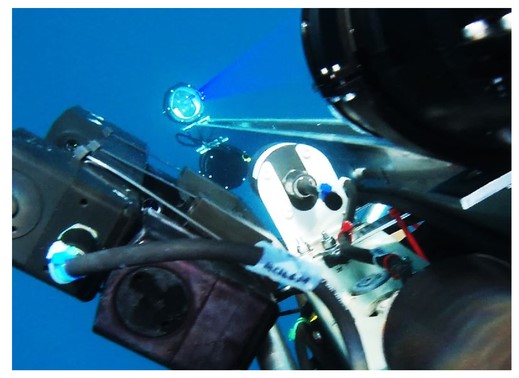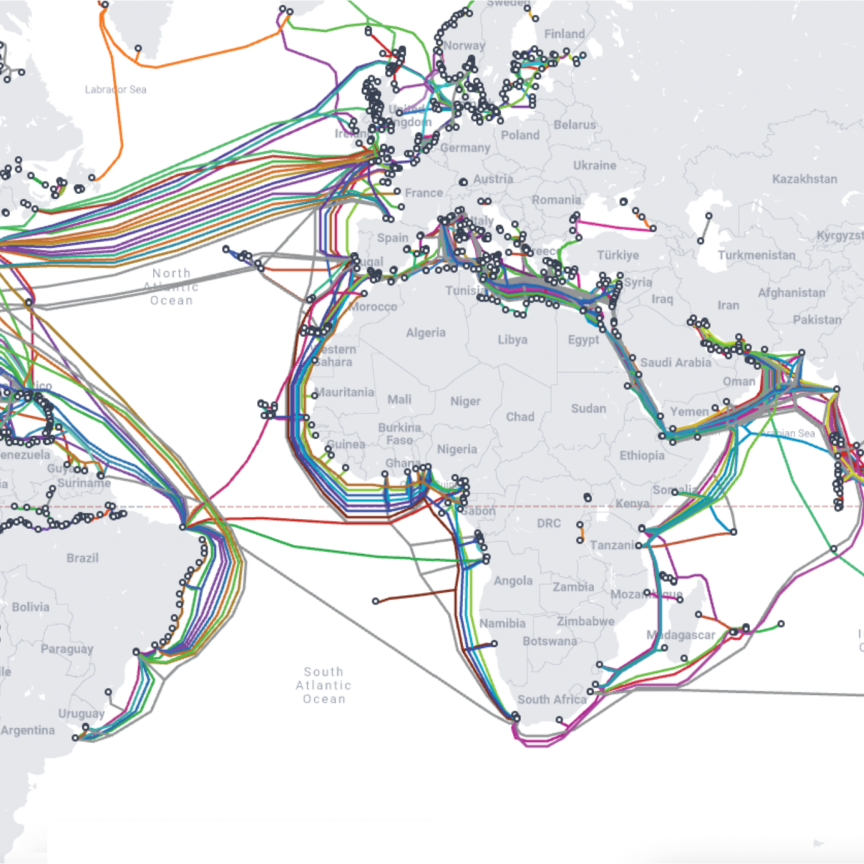Superluminescent LED drivers can help us understand ocean turbulence, here’s how
Superluminescent light emitting diodes (SLEDs) have hit the mainstream in recent years, providing high-power, broadband light sources.
Compared to traditional laser diodes, SLEDs provide a light source with high intensity and spatial coherence, coupled with a broad, smooth optical output spectrum based on superluminescence. Now, you can find SLEDs in everything, from optical coherence tomography (OCT) systems to optical sensing tools and fibre optic gyroscopes.
Jeremiah Hashley, a technical writer with Wavelength Electronics, explained: ‘SLEDs are important as they provide an alternative to laser light sources, including laser diodes and gas lasers. Their construction is similar to laser diodes, but no lasing actually occurs in an SLED.’
A key difference between a laser diode and an SLED is the optical output power. Hashley added: ‘Laser diodes can become a danger to eye safety when powers are too high. SLEDs can provide high output brightness at lower optical output powers, decreasing potential eye damage. Unfortunately, SLEDs have lower coherence than laser diodes, but this is resolved with spatial filtering after the output of the SLED.’
Deep dive
In a recent experiment, an SLED was used to provide the optical output and brightness needed in a deep ocean water experiment, as well as providing sufficient coherence with spatial filtering. The SLED operated with less power consumption than a typical laser, increasing the eye safety for the operator. The use of imaging and free-space optical communication is increasing in underwater applications, requiring such optical devices to overcome the constantly changing characteristics of the water, especially in the ocean.
Here, effects such as scattering, absorption and turbulence can all affect the effectiveness of imaging and communication. Scattering and absorption of light from particulates, for example, decrease the transmitted light levels used for imaging and communication in natural water.
Scattering occurs when the emitted light collides with suspended particulates and its straight path deviates. Absorption occurs when organic material captures the emitted light and converts it into internal energy, usually heat.
However, when dealing with clearer ocean waters, optical turbulence is a major challenge, limiting the resolution and visibility of the light source used.
Overcoming challenges
Post-processing techniques are sometimes used to enhance imaging in waters with turbulence. But the operator cannot anticipate or directly quantify turbulence conditions. So, the operator can only slightly improve the results.
‘The largest challenge to characterising ocean turbulence is having in-situ, real-time measurements. As turbulence is not constant in relation to depth or location, real-time quantification of turbulence conditions can help operators anticipate turbulence in their direct vicinity,’ Hashley explained.
‘A few long-path systems have been developed, but the long-path design is not ideal for simple deployment. A small, more portable system is needed to directly measure optical turbulence.’
So, researchers from the Naval Information Warfare Center Pacific (U.S.) and the University of Central Florida recently designed and developed new algorithms and a portable scintillometer to characterise ocean turbulence for these imaging and free space optical communication applications.
Just like a laser diode, the SLED used in this experiment was carefully controlled with regards to the temperature and input current. ‘Proper operation of SLEDs requires a low-noise current source, as well as a stable temperature controller,’ Hashley explained.
Wavelength Electronics provided a controller (LDTC1020) with a high-precision current driver and a highly stable temperature controller. With the stable temperature and input current provided to the SLED, the wavelength and optical output did not fluctuate and remained exactly where the researchers intended.
The LDTC1020 also has a very small footprint (6 x 7 x 3 cm), maintaining the system’s portability. Because of the required portability of this scintillometer, the system was also powered by battery modules. ‘Wavelength Electronics’ controller also ensured power from the battery to the SLED remained consistent, as well as with low noise to the SLED. This enabled sensitive measurements with low noise and stable current and temperature output,’ Hashley added.

Portable SLED Scintillometer system with battery module for transmitter and receiver housing
One challenge was confirming the SLED was an appropriate substitute for a laser diode. ‘This was critical to proceed with the turbulence research. SLEDs have extreme sensitivity to noisy current and temperature fluctuations. Not only can this affect the output of the SLED, but also its lifetime,’ Hashley added.
Increased understanding
In this research, two main parameters of ocean turbulence were measured: the refractive-index structure parameter and the inner scale of optical turbulence. These are related to the effects of turbulence on light propagation in the ocean and the strength of the turbulence.
The researchers found a correlation between the thermocline (temperature gradients) of the ocean and the two parameters measured. Both parameters showed maximum measurements at the top and bottom of the ocean thermocline, showing the effects of turbulence on propagating light. Hashley added: ‘Not only did these findings validate the effectiveness of the designed portable scintillometer for characterising ocean turbulence, but it also showed large attenuation of emitted light at the top and the bottom of the thermocline in the ocean.’ Future experiments will fine-tune system set-up for different sea depths and other ocean locations.
Hashley added: ‘As imaging and communication applications in the ocean increase today, it is crucial that we understand how ocean turbulence attenuates and affects light signals underwater.’

The full results and set-up used in this experiment are presented in Wavelength Electronics’ latest white paper, Deployable Scintillometer for Ocean Turbulence Using Superluminescent LED.


